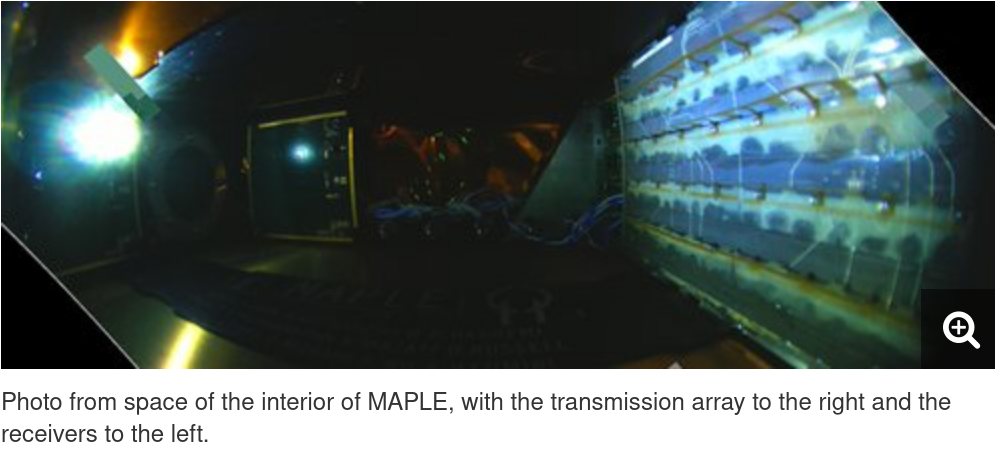Beaming solar power to Earth from space may sound like science fiction. But last week, it became "science fact".
In a groundbreaking experiment, scientists at Caltech managed to successfully transmit solar power to Earth from space wirelessly for the very first time.
Unlimited potential
Unlike the Earth, where solar power generation is constrained by the cycles of day and night, the changing seasons, and cloud cover, space provides a virtually unlimited supply.
As a result, the Caltech team estimates that a space-based solar panel could produce eight times more energy than one place in even the very sunniest spot on Earth.
The problem is, of course, finding some way to transmit energy across vast distances without using any wires.

MAPLE
The successful experiment was conducted by Caltech’s Space Solar Power Project using a device they've dubbed, "Microwave Array for Power-transfer Low-orbit Experiment," aka MAPLE, which uses microwaves to transmit solar power wirelessly.
MAPLE was launched into orbit in January aboard Caltech's Space Solar Power Demonstrator (SSPD-1).
It wasn't until last Wednesday, however, that the team reported that MAPLE had successfully beamed solar energy from space to a receiver on the rooftop of Gordon and Betty Moore Laboratory of Engineering on Caltech’s campus in Pasadena.
“Through the experiments we have run so far, we received confirmation that MAPLE can transmit power successfully to receivers in space,” said Space Solar Power Project co-director Ali Hajimiri. “We have also been able to program the array to direct its energy toward Earth, which we detected here at Caltech. We had, of course, tested it on Earth, but now we know that it can survive the trip to space and operate there.”
How it works
The in-orbit SSPD-1 consists of two solar panels connected to an array of transmitters within MAPLE.
These transmitters use something called "constructive and destructive interference" to beam energy across great distances in the form of microwaves.
Even more impressive, MAPLE does the job without any moving parts—meaning it won't be subject to the ordinary wear and tear that's the primary culprit when technology goes on the fritz.
"To the best of our knowledge, no one has ever demonstrated wireless energy transfer in space even with expensive rigid structures. We are doing it with flexible lightweight structures and with our own integrated circuits. This is a first," says Hajimiri.
The professor and his team have even produced a couple of illuminating videos explaining exactly how their groundbreaking new tech works.
The first covers the general principles at work in wireless power transfer, while the second breaks down the specifics of how their new tech accomplishes this amazing feat.